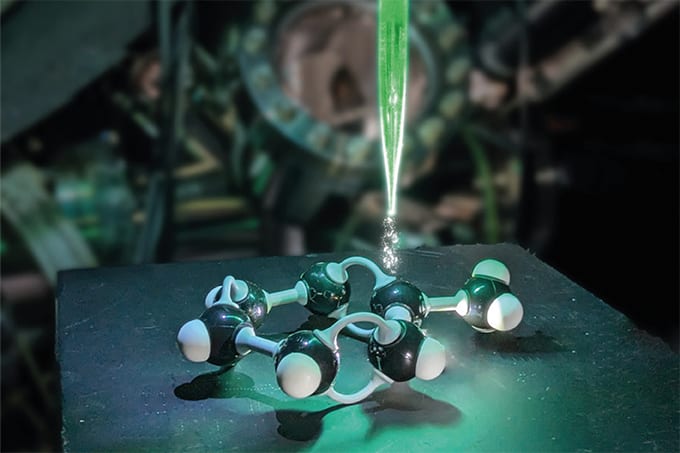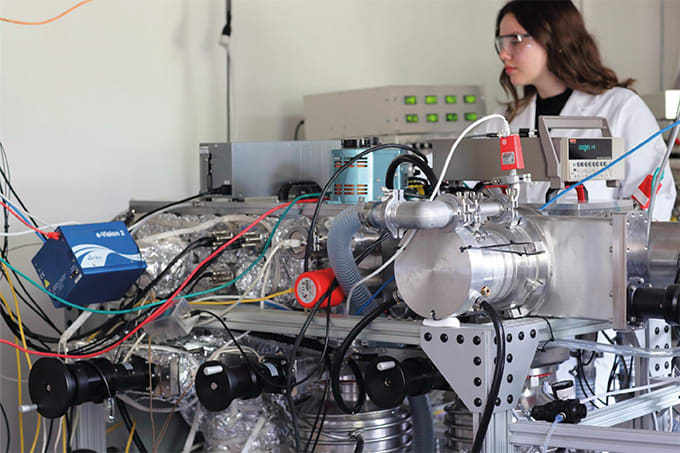When it comes to the production of biological drugs, cultivation, separation/purification, and characterization feature heavily – and analytical techniques are crucial at every stage. Conventionally, these steps aren’t connected, which causes unnecessary interruption in operations and introduces potential manual errors.
Continuous bioprocessing is often seen as the next evolution in biopharma manufacturing. By physically connecting each step and monitoring the process using in-line instruments, automation, and more efficient analytical techniques, interruptions (and errors) are avoided, saving time and money for manufacturers.
We invited Daniel Kutscher, Andreas Mielcarek, and Ulrich Eberhardinger from Agilent Technologies to discuss the role played by analytical advances in the march towards continuous bioprocessing.
What are the main benefits of continuous bioprocessing and biomonitoring for pharmaceutical manufacturers?
Daniel Kutscher: Manufacturers are always striving to reduce production times. Batch manufacturing can take several weeks and time spent on the manufacturing floor is expensive. To shorten release times down to a few days – and save money as a result, companies are at least considering continuous approaches to manufacturing.
Besides streamlining the process, continuous bioprocessing and real-time biomonitoring can also save time and money through the reduction of human errors.
Are companies already making the switch to continuous bioprocessing?
Kutscher: We get requests frequently from companies looking to make the switch, so the interest is definitely there! However, immediate transfer is challenging: a great deal depends on the process you want to implement or change, and some processes are more difficult to implement than others.
For instance, the purification process is currently seeing a great deal of automation, but connecting filtration and centrifugation into the rest of the process can be more troublesome. And that’s why many manufacturers firstly focus on integrating partial steps, allowing them to work with hybrid processing until the entire workflow can be automated.
What are the main challenges from an analytical standpoint?
Kutscher: The quality assurance and quality control (QA/QC) lab needs to move to the manufacturing floor. It’s no longer suitable to maintain traditional offline/at-line workflows, which would take days or even weeks to get results back from a dedicated QC lab. Implementing quality control as part of the process grants you immediate data and process feedback, saving time and optimizing the manufacturing process. Once the system is in place, efficiency is greatly improved. However, depending on the bioprocess, implementing inline and online workflows can pose challenges.
What analytical technologies have the potential to improve biopharmaceutical analysis?
Kutscher: High-performance liquid chromatography (HPLC) is already gold standard in QA/QC labs to monitor critical quality attributes (CQAs). Liquid chromatography is also progressing to the manufacturing floor, creating a need for automation in monitoring CQAs during bioprocessing. Online liquid chromatography workflows are a lot easier to establish in the modern day, with commercial solutions and proven technology available on the market.
Andreas Mielcarek: We’re also seeing a trend in process analytical technology (PAT) of using a multi attribute method (MAM) to characterize – as the name suggests – multiple quality attributes at once. MAM was initially intended for use across the product life cycle – from process development to quality control. However, its increase in popularity with quality by design in biopharmaceutical development has led to its growing adoption in that area. By simultaneously and directly monitoring CQAs (such as sequence, post-translational modifications, and impurities), MAM improves efficiency and workflow for biopharmaceutical analysis.
How can LC advances improve bioprocess monitoring?
Ulrich Eberhardinger: Many biopharmaceutical manufacturers can improve analysis using 2D-LC, which offers another level of resolution and can perform two or more analysis steps with a single sample run. For example, titer and aggregation analysis of monoclonal antibodies can be done in one measurement, reducing analysis time by 80 percent. In combination with PAT, this is a very powerful technique.
Kutscher: Following Ulrich’s point, online liquid chromatography can provide near real-time process information at a highly sensitive level. This enables deciphering the complexity of biomolecules, and hence provides better process understanding and more straight-forward process optimization. When used online, HPLC can furthermore support automated decision making workflows via feedback loops.
Where is biopharmaceutical analysis heading?
Mielcarek: Analytical techniques are faster, more precise, and more sensitive, enabling the detection of previously undetectable impurities and contaminants. As we move into the future, I see a revolution in biopharmaceutical analysis through numerous technological and methodological advancements. Artificial intelligence and machine learning will play a huge part in data analysis, facilitating the development of predictive models for product quality and process optimization.
In addition, as personalized medicine emerges, there will be a higher demand for customized biopharmaceutical products, which will demand the development of new analytical methods to ensure consistency and product effectiveness. For example, applying single cell analysis and microfluidics to gain deeper understanding of the complex biological mechanisms, underlying disease, and drug response.
As a whole, the future of biopharmaceutical analysis will be driven by the pursuit of innovation and optimization to create safe, effective, and affordable products to improve patient outcomes and quality of life.
Kutscher: Gene and cell therapy-based medicines are gaining momentum, requiring flexibility on manufacturing floors, shorter release times, and integrated analytics. This sees a host of challenges, but also a wealth of opportunities in drug development as the industry aims to move into the future.
Daniel Kutscher is CSD Commercialization Manager at Agilent Technologies
Andreas Mielcarek is Product Manager Biopharma Solutions & Bio LC at Agilent Technologies
Ulrich Eberhardinger is Senior Product Manager Strategic Marketing at Agilent Technologies







